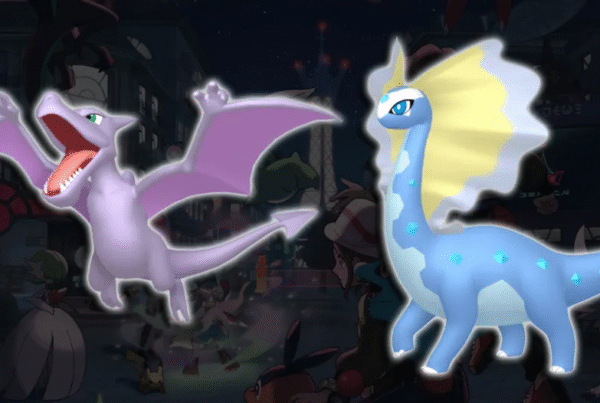The Northern Lights — also known as the Aurora Borealis — remain one of nature’s most mesmerizing spectacles. Yet, seeing them is never guaranteed. It requires a blend of solar activity, Earth’s magnetic conditions, clear skies, and, often, luck. This article will guide your readers through how scientists forecast aurora activity, what the key indicators are, and how enthusiasts can improve their chances of witnessing this celestial dance.

What Creates the Northern Lights?
To understand forecasts, one must first grasp the cause of the aurora:
- Solar emissions. The Sun ejects streams of charged particles (solar wind) and, during eruptions like coronal mass ejections (CMEs) or solar flares, releases denser clouds of those particles.
- Earth’s magnetosphere. When those charged particles reach Earth, they are directed by the planet’s magnetic field toward the polar regions.
- Atmospheric collisions. As these particles collide with atoms and molecules in Earth’s upper atmosphere (mostly oxygen and nitrogen), they excite them; when those excited atoms return to their normal state, they release light — the glowing curtains and waves we see.
Thus, the strength and timing of an aurora depend largely on solar activity and how those particles interact with Earth’s magnetic field.

Key Forecasting Tools & Metrics
Aurora forecasting relies on multiple scientific measurements and models. Below are the most important:
Kp Index
- A scale from 0 to 9 that quantifies global geomagnetic activity.
- Lower values (0–2) indicate weak activity; higher values (5–9) indicate strong geomagnetic storms.
- A higher Kp value corresponds to stronger chances of seeing auroras, especially at lower latitudes.
- Forecast models often project probable Kp values for the next few hours to days.

Solar Wind & Magnetic Field (Bz)
- Satellites located at the L1 Lagrange point (about 1.5 million km towards the Sun) continuously monitor solar wind speed, density, and magnetic field orientation.
- The Bz component of the interplanetary magnetic field is crucial: when Bz is negative (i.e., pointing southward relative to Earth), conditions are favorable for more efficient energy transfer into Earth’s magnetosphere, increasing auroral chances. NOAA Space Weather Prediction Center+1

Short-Term vs. Long-Term Forecasts
- Short-term forecasts (15–45 minutes ahead) are possible because satellites directly upstream detect incoming solar wind conditions. This gives a narrow “nowcast” window. NOAA Space Weather Prediction Center
- Longer forecasts (hours to days ahead) rely on models (like the OVATION model, among others) to simulate how solar events will impact Earth. NOAA Space Weather Prediction Center+2Aurora Forecast+2
Cloud Cover, Moonlight & Local Conditions
- Even if the geomagnetic conditions are favorable, you still need clear skies. Clouds block the view.
- Moon brightness can wash out fainter auroras.
- Light pollution from cities or artificial lighting drastically reduces visibility, especially for weaker displays.
How to Read & Use Aurora Forecasts
- Check Kp forecast maps or charts. Many aurora forecast websites overlay Kp predictions on world maps, showing the “auroral oval” — the zone where auroras are likely. NOAA Space Weather Prediction Center+3Northern Lights Map+3Aurora Forecast+3
- Look for negative Bz in real time. A sudden drop (southward) often signals intensifying activity in the next 30–60 minutes.
- Monitor local weather (clouds). A sky forecast often exists right alongside aurora forecasts.
- Note the timing window. The best viewing often falls between 10 PM and 2 AM local time (varies by location), but sometimes earlier or later depending on solar storm arrival.
- Use multiple forecast sources. Cross‑comparing predictions reduces reliance on a single model or app.
- Set alerts or push notifications. Many aurora apps allow customizable alerts when Kp or Bz crosses a threshold.
Example Forecast Services
- NOAA / SWPC offers a 30‑minute aurora forecast using the OVATION model. NOAA Space Weather Prediction Center
- AuroraForecast.me provides combined predictions of Kp, cloud cover, and moonlight for each city. Aurora Forecast
- AuroraNow delivers real‑time aurora overlays and short‑term projections. Aurora Now
These tools are popular among aurora chasers worldwide.
Tips to Maximize Your Chances
- Go remote & dark. Drive away from city lights. Even a few kilometers of darkness can make a big difference.
- Be patient & flexible. Aurora activity often comes and goes in bursts. Stay outside long enough (at least 1–2 hours) during peak windows.
- Dress warmly. Nights can be cold at high latitudes.
- Use a camera sensor. Some auroras are too faint for the naked eye but visible through long‑exposure photography.
- Watch for short‑term changes. If a sudden Bz drop occurs, it can awaken a weak storm.
- Check multiple nights. If one night is cloudy or inactive, try again — auroras often persist through multiple nights during active solar periods.
Current Solar Cycle & Trends
We are currently in a phase of increasing solar activity (solar maximum). During solar maxima, more sunspots, flares, and CMEs occur — raising the likelihood of strong auroral events that can reach lower latitudes than usual. This makes the coming months especially promising for aurora watchers.
Sample Forecast Interpretation (Hypothetical)
Suppose an aurora forecast shows:
- Kp = 5 in the next 3 hours
- Bz = –8 nT (southward)
- Clear skies with no moon interference
- Local time between 11 PM and 1 AM
This combination suggests a good chance of a visible Northern Lights display, especially if you are at high or mid latitudes and in a dark location.
Conclusion
Forecasting the Northern Lights blends space‑weather science with earthly conditions. While no forecast can ever be perfect, understanding indices like Kp, monitoring Bz in real time, checking weather, and being in the right place at the right time will greatly improve your odds of witnessing nature’s most spectacular light show.



